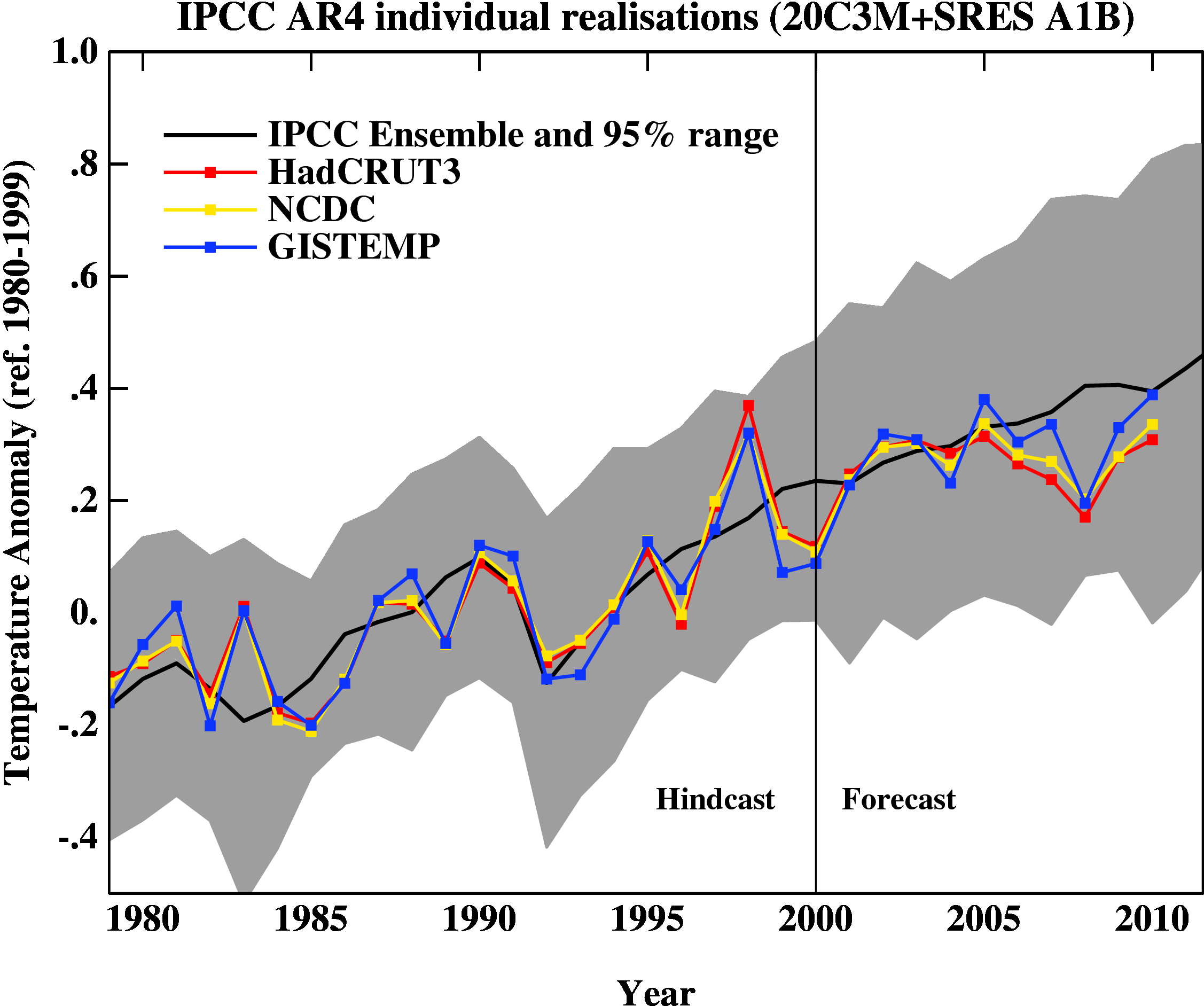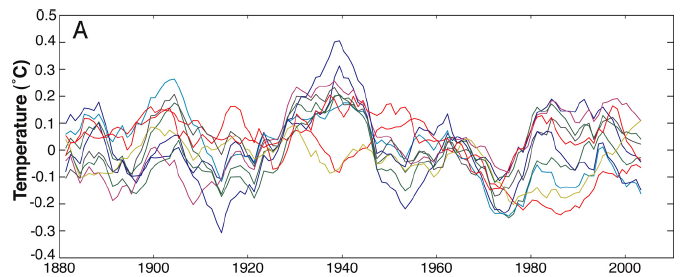Carter Confusion #1: Anthropogenic Warming
Posted on 19 May 2011 by dana1981
Bob Carter is a marine geologist at James Cook University in Queensland, Australia who in recent years has forayed into the field of climate science, for example co-authoring the extremely flawed study McLean et al. 2009 which attempted to blame global warming on the El Niño Southern Oscillation. Recently, Carter penned a media article in which he argued against Australia's proposed carbon tax. The article is a fairly typical Gish Gallop in which Carter seems to attempt to jam as many climate myths into as few words as possible, interspersed with a lot of empty political rhetoric and the usual misunderstanding of climate economics. The article contains too many myths to refute in a single post, so we will address it in a Carter Confusion series in the same vein as Monckton Myths, Christy Crocks, and Lindzen Illusions.
In this first installment, we will examine Carter's claims that there is no evidence that the observed global warming is man-made, and that it is instead caused by the natural internal variability of the climate system.
Anthropogenic Fingerprints
Carter leaps quickly out of the gate, launching a whopper in the second paragraph of his article (emphasis added):
"Since [the 1980s], with the formation of the IPCC, and a parallel huge expansion of research and consultancy money into climate studies, energy studies and climate policy, an intensive effort has been made to identify and measure the human signature in the global temperature record at a cost that probably exceeds $100 billion. And, as Kevin Rudd might put it, “You know what? No such signature has been able to be isolated and measured."
First of all, it's difficult to determine where Carter is getting this $100 billion figure from. The article focuses specifically on Australia, and the country has not spent $100 billion on climate research in its entire history, period. Even on a global scale, nowhere near $100 billion has been spent on studies to identify anthropogenic signatures of global warming. Carter appears to be playing fast and loose with the facts in order to appeal to his readers' emotions during difficult economic times, which is a highly unscientific approach. Not a promising start to the article.
Furthermore, as Skeptical Science readers know, the claim that no human warming signatures have been identified is entirely false, and reveals that Carter is either ignorant of the field of climate science, or is not being honest in his article. We have previously addressed the anthropogenic "fingerprints" or "signatures" of global warming in the rebuttal to "it's not us". Below is a brief summary of those fingerprints:
- the upper atmosphere is cooling
- the tropopause height is rising
- nights are warming more than days
- sea level pressure is rising
- precipitation is changing as expected from anthropogenic forcing
- ocean heat content is changing as expected from anthropogenic forcing
- downward longwave radiation is increasing
- upward longwave radiation is decreasing
Additionally, the warming trend is accurately projected by climate models – another fact which Carter denies later in the article.
Models Accurately Project Warming
"One thing is known for certain about these computer models, and it is that they are wrong as tested against the last twenty years of elapsed global temperature."
This is another false statement. As we saw in Lindzen Illusion #2 and the rebuttal to "Hansen's 1988 prediction was wrong", in 1988 James Hansen projected global temperature changes to a high degree of accuracy (Figure 1).

Figure 1: Hansen et al. 1988 Scenario B adjusted to reflect observed radiative forcing changes (red) vs. our reconstruction of what Lindzen's temperature projections may have looked like based on comments he made in a 1989 talk (blue) and the average of the GISTEMP land-only and land-ocean temperature record (black).
Additionally, the observed temperature change is well within the range of IPCC model projections (Figure 2).

Figure 2: IPCC AR4 hindcast and forecast temperature projection range vs. observations (RealClimate)
Internal Variability
Carter also suggests that rather than being man-made, the observed global warming could just be due to natural internal variability:
"that we can’t identify and measure [an anthropogenic warming signal] indicates that the signal is so small that it is lost in the noise of natural climate variation....Global average temperature at the end of the twentieth century fell well within the bounds of natural climate variation"
"It's internal variability" has become a popular "skeptic" argument, and one which we have previously addressed in Christy Crock #3 and Lindzen Illusion #5. The argument's Achilles heel is that the oceans, from which heat would be transferred to the air if surface warming were simply due to internal variability, are also warming. Moreover, contrary to Carter's claim, the average global surface air warming over the past century (0.8°C) is well outside the range of the influence of internal variability on surface temperatures over decadal timescales (generally no more than 0.3°C), and this variability can account for little if any of the 20th century warming (Figure 3).

Figure 3: Estimation of the observed signature of internal variability in the observed 20th century global mean temperature in climate model simulations (Swanson et al. 2009).
Carter Strikes Out
Here we have examined just three of the many false claims in Carter's article. In each case, Carter's claims were easily refuted by a quick review of the scientific literature. Yet amazingly, Carter also has the gall to claim
"environmental activists and their supporters, including apparently many scientists, [developed] the disease known as deaf ear."
In reality it's Carter who appears to be deaf and blind to the body of climate science research. Until he puts in the time to learn about the scientific field, Carter is in no position to be advising others how we should respond to the threats posed by climate change. Carter advising climate "skeptics" is a case of the blind leading the blind.































 Arguments
Arguments






























[DB] I found it through Ramanathan's website here:
http://www-ramanathan.ucsd.edu/files/pr15.pdf
If it takes too long to load IE may give you that message. Try another browser or a faster connection. Worked for me.